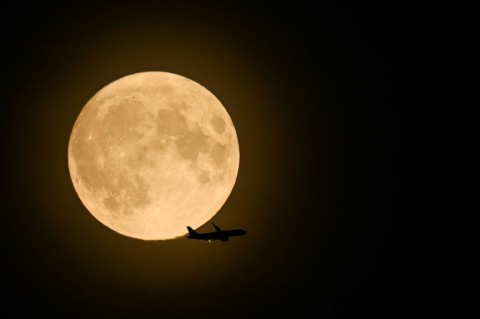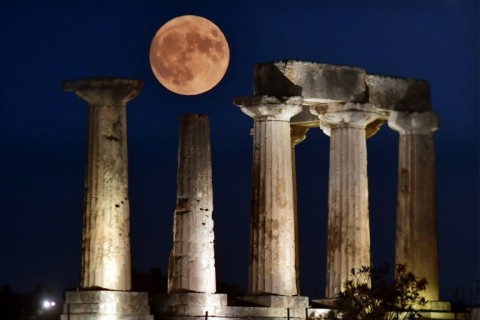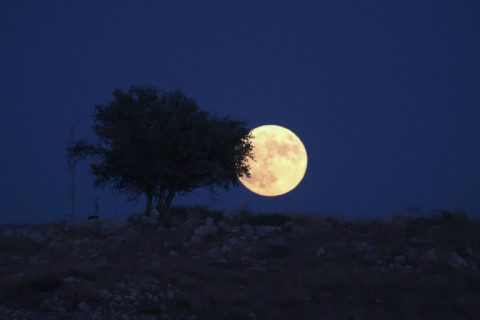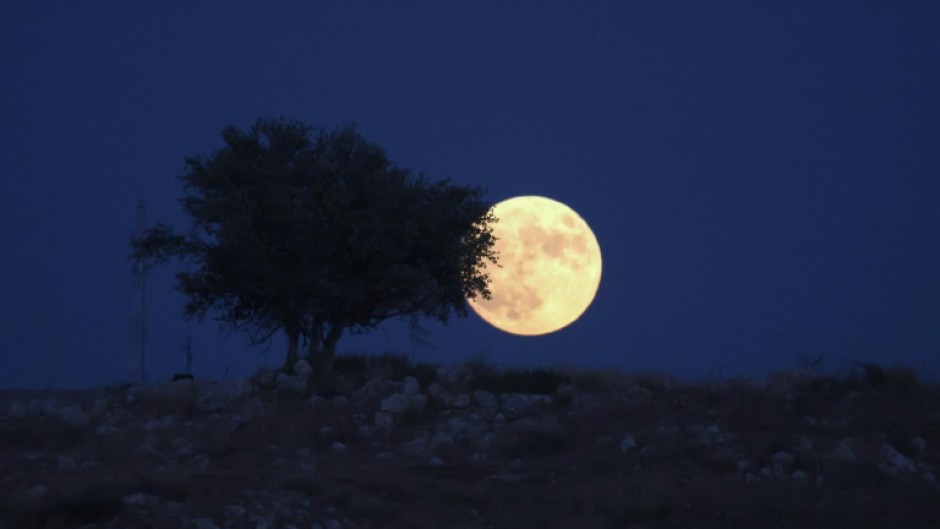
WASHINGTON - Astronomy enthusiasts are in for a treat Wednesday night: a rare "super blue Moon" that won't be seen again for more than a decade.
Supermoons occur when the Moon passes through its perigee, or the point that takes it closest to Earth during its elliptical orbit. This makes it look about 14 percent bigger compared to when it is at its furthest point, and a touch brighter.
Full Moons are defined by the exact moment they are opposite the Sun, which will occur at 9:36 pm Eastern Time on August 30 (0136 GMT Thursday), according to NASA.
The Virtual Telescope Project, hosted by Italian astronomer Gianluca Masi, will host a YouTube livestream beginning at 0336 GMT as it sets below the skyline of Rome.
Despite the description, it won't actually be blue: the term "blue Moon" simply refers to when we see a full moon twice in a month. This happens because lunar cycles are a bit shorter at 29.5 days than calendar months, which last 30 or 31 days, so it's possible for one to happen at the start of a month and the other right at the end.
The previous super blue Moon occurred in December 2009, with the next set to come in quick succession: January and March of 2037.
The origins of the English expression "once in a blue Moon," today understood to mean something that is very rare, go back hundreds of years. In Elizabethan times, "he would argue the Moon was blue" could be said about a person making outlandish or patently absurd claims.

It is possible, however, for the Moon to take on a blue hue in the right circumstances. This can occur as a result of smoke or dust particles in the atmosphere scattering red wavelengths of life, such as following the eruption of Krakatoa in Indonesia in 1883.
Dust from the event "turned sunsets green and the Moon blue all around the world for the best part of two years," according to Sky & Telescope magazine. A more recent example may have occurred after 1950's Chinchaga Firestorm, a huge blaze that consumed the northern boreal forests of Canada.
- Higher tides -
The planet Saturn, just a few days out from its closest and brightest approach to Earth this year, will also appear near the Moon.
Wednesday's full Moon coincides with the Hindu festival "Raksha Bandhan" or Rakhi, which celebrates the bond between siblings. It is traditional for sisters to tie a rakhi, or cotton bracelet, around their brother's wrist, who give a gift in return.

It also falls in the month of Elul in the Hebrew calendar, a time of seeking and granting others forgiveness, as well as beginning and ending letters with wishes for the recipient to have a good year.
"As usual, the wearing of suitably celebratory celestial attire is encouraged in honor of the full Moon. Take care of your siblings, let go of grudges, and here's wishing you a good year!" said a NASA post.
While the super blue Moon will make for specatular photos, its stronger gravitional pull also makes tides higher, which could exacerbate coastal flooding from Hurricane Idalia as it sweeps across Florida.
ia/dw
By Issam Ahmed

